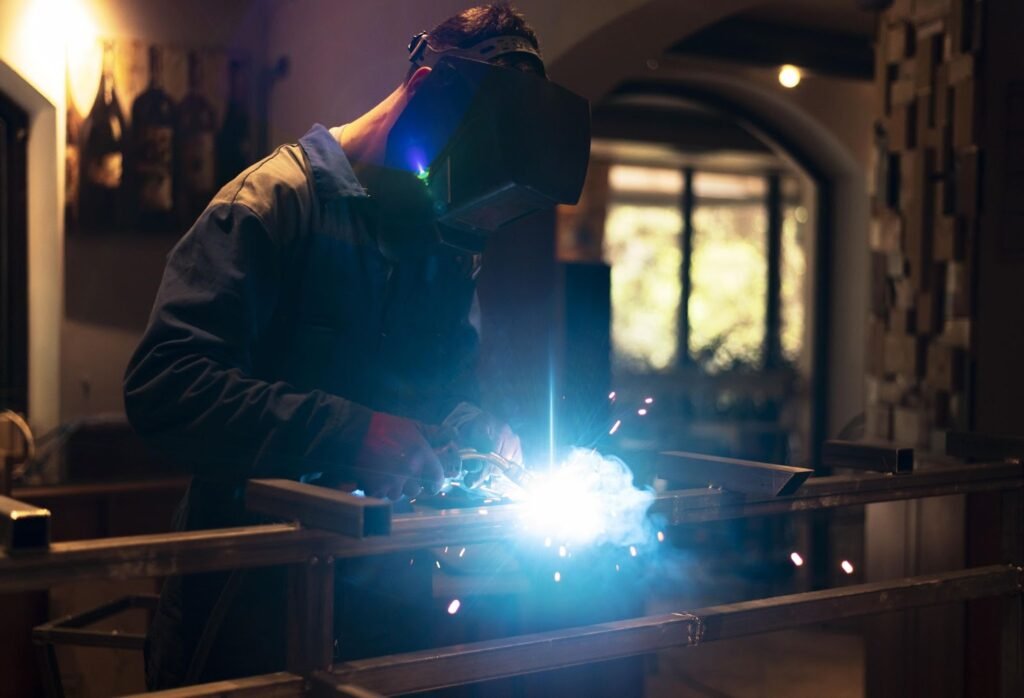Efficiency in contemporary manufacturing is no longer the sole concern. More and more, Canadian businesses are striving to reduce their environmental impact without sacrificing quality or production. One of the processes they’re succeeding at both with is laser welding—a high-speed, precise process that is not only speedy and accurate but cleaner than a lot of old processes.
As the pressure mounts to create cleaner, waste-free production, laser welding becomes a progressively vital part of Canada’s move toward sustainable production.
Why Is Laser Welding Green?
Laser welding is more than a new technology. It is green in its own right.
Here’s why:
- Less energy consumed per weld than traditional processes
- Less wasted material, since it will accurately join the material
- Less emission, as it produces minimal smoke or spatter
- Cleaner work area, no need for additional ventilation
- Fewer consumable usage, like filler material or flux
Combine them and they equal fewer waste, less cleanup, and less energy consumed per product—with excellent, consistent welds.
Replacement of High-Emission Welding Processes
Conventional techniques like MIG, TIG, and stick welding typically require high amounts of energy and emit fumes that must be heavily filtered. These fumes may contain harmful gases and particulate matter, particularly when welds are made on coated materials or certain alloys.
Laser welding reduces most of these issues. The heat is focused, hence less is being transferred to adjacent material and fewer harmful substances released into the atmosphere.
Various Canadian manufacturers have noted quantifiable energy and emissions reductions after they cut out gas-hungry welding with laser technology.
Reducing Scrap, Saving Money
In the conventional system, mistakes in welding can result in part warping, rework, or even scrapping parts. All of that mounts up over time as material waste, energy lost, and higher operating expenses.
Laser welding, being precise, minimizes errors and rework. It leaves behind cleaner welds, tighter tolerances, and better quality consistency. This not only minimizes waste but also conserves precious resources like metal plates and energy-hungry components.
Green manufacturers often cite minimized scrap among the greatest advantages of implementing laser welding technology.
Energy Efficiency on the Factory Floor
Laser welding machines are more energy-efficient than traditional machines. They concentrate heat only where it can be used, so less energy is wasted in the surrounding material.
Even some machines enable direct control of energy, controlling beam power according to material thickness, material type, or weld depth required. This implies energy will never be wasted, and minimum input required to join parts is achieved.
In Canada, where energy prices can be high and greenhouse gas emissions are tightly monitored, such mastery is an advantage.
Accompanying Cleaner Supply Chains
Canadian companies are increasingly being called upon to demonstrate their green credentials — by regulators, and by customers. Laser weld customers are frequently well-placed to respond to the environmental demands of big buyers as well as government purchasing.
As an example, producers are now mandated to disclose emissions and sustainability across their supply chain. If a supplier of theirs uses energy-intensive, wasteful processes, that will affect the entire chain’s compliance.
Using laser welding, the suppliers are reducing the overall environmental footprint of the products they assist in producing — electric cars to smart devices to aerospace parts.
Lighter Environmental Footprint in Small and Medium Shops
You don’t have to be a giant factory to take advantage of green welding. Mid-size and small Canadian manufacturers are also investing in small laser systems that enable cleaner, safer productions.
These systems:
- Took up less floor space
- Used fewer consumables
- Emitted fewer pollutants
- Are simpler to fit into local environmental initiatives
With government incentives and green bonuses on the table in most provinces, even small firms can invest in laser technology — and the environmental return is instant.
Safer for Employees
A cleaner weld is also safer for employees on the plant floor.
Laser welding eliminates the release of deadly fumes, reduces exposure to excessive heat, and removes the risk of flash burns or accidental burns. Employees in laser shops generally describe improved air quality and fewer safety risks than those working with older arc welding equipment.
Businesses which make a commitment to workers’ safety and health will commonly report that laser equipment is simpler to control, particularly when integrated with enclosures or automated equipment.
Examples from Around Canada
Numerous Canadian companies are already demonstrating how laser welding can increase productivity and sustainability:
- Quebec aerospace manufacturers are utilizing fiber laser systems to minimize material waste in lightweight components
- Ontario auto part suppliers have turned to laser welding for electric vehicle battery enclosures to achieve green objectives
- British Columbia metal precision shops are providing “green welding” services to environmentally friendly furniture and building projects
These are just some of the ways that firms large and small throughout the country are realizing the potential of combining high-tech manufacturing with green values.
A Winning Combination for Canada’s Green AgendaCanada is committed as a nation to net-zero emissions by 2050. To make it happen, every sector—including manufacturing—must evolve.
Laser welding is the answer. It’s a victory for manufacturers:
- Reduced energy consumption
- Reduced waste and emissions
- Improve efficiency
- Enable healthier and safer work environments
For businesses looking to expand but still under green regulations, laser welding is more than a smart upgrade—it’s an advancement toward factory-of-the-future production.
Final Thoughts
Green is no longer an added amenity for manufacturing. It’s mandatory. Laser welding is assisting Canadian businesses to approach this challenge head-on, providing cleaner, smarter methods of constructing the products that power our lives.
Whether you’re a big supplier or your local fabricator, greening up with laser welding will be better for both your bottom line and the environment. With more Canadian manufacturers—especially in the Toronto welding sector—embracing this clean technology, the clean production future is not only possible, but plausible.

